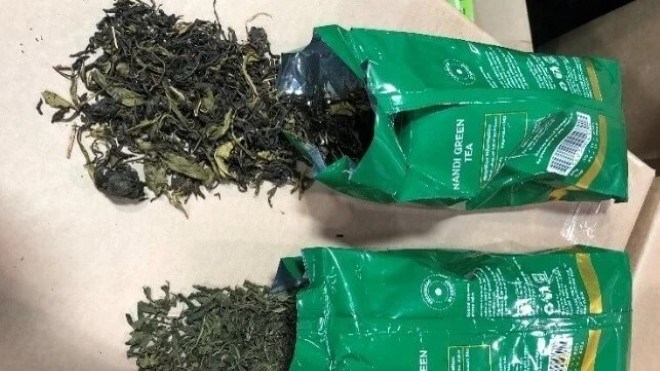
Friday July 29, 2022

Khat seized by CBP. (Source: US Customs and Border Patrol Protection) https://www.cbp.gov/newsroom/local-media-release/cbp-us-coast-guard-seize-more-10-tons-khat
Within the Seattle Maritime Port, a collaborative effort involving the US Homeland Security Agencies, Customs, Border Protection (CBP), and the US Coast Guard culminated in confiscating more than 20,000 pounds of dried khat with an approximate street value of $3.6 million.
An examination of a container that seemed to carry khat was held by US Customs and Border Protection authorities and the US Coast Guard at the Port of Seattle. It was confirmed by the Animal and Plant Health Inspection Service that the samples were khat, and the container was forwarded to the United States Department of Agriculture Laboratories and Scientific Services had been confirmed.
The investigation suggested the presence of cathinone, a chemical that is classified as a Schedule 1 restricted substance. When the leaves are newly harvested, khat is categorized by the Drug Enforcement Administration (DEA) as a Schedule I narcotic, the DEA’s most stringent classification for a controlled substance. In the US, both cathine and cathinone, two of khat’s primary components, are classified as chemicals subject to regulation.
Khat was discovered in a total of 623 different boxes by CBP officials, and its combined weight was about 20,215 pounds. According to the shipping documents, the consignment was supposed to include dried tea leaves from Kenya and was headed to Seattle. Instead, the khat was confiscated by CBP agents and will be stored appropriately until it is destroyed.
“This khat seizure demonstrates Customs and Border Protection officers’ effectiveness, dedication and expertise searching through the tens of thousands of international containers to find the proverbial needle in the haystack,” said J. Rene Ortega, CBP’s Port Director for the Area Port of Seattle in a statement. He also reiterated that “Khat remains illegal to import into the United States and CBP officers will continue to seize khat and all illicit substances that pose a threat. Drug interdiction at our nation’s borders is one of many ways in which CBP helps to keep our communities safe.”
The consumption of khat is socially acceptable among the cultures of Somalia, Ethiopia, and Yemen – but not in the US. In the US, the demographic that is most likely to consume khat is composed of immigrants from these countries. Cities having significant immigrant populations from Somalia, Ethiopia, and Yemen, such as Boston, Columbus, Dallas, Detroit, Kansas City, Los Angeles, Minneapolis, Nashville, New York City, and Washington, DC, have the highest rates of substance abuse.
What About Khat?
The khat plant, also known as Catha edulis, is a flowering shrub native to the Arabian Peninsula and East Africa. Since the 13th century, the indigenous people of East Africa, the Arabian Peninsula, and the Middle East have used the plant extensively as a recreational narcotic. This use dates back to when the herb was first discovered. People chew khat leaves because of the stimulant and euphoric effects they produce. The report said these effects are comparable but less severe than those psychologically-diagnosed addicts abusing substances like cocaine or methamphetamine.
When khat leaves are fresh, they have a sheen and a color that resembles a crimson-brown version of dried basil. However, after being plucked from the shrub on which they grow, khat leaves often start to decay forty-eight hours after being removed. The deteriorating leaves of khat have a leathery texture and a yellowish-green coloration.